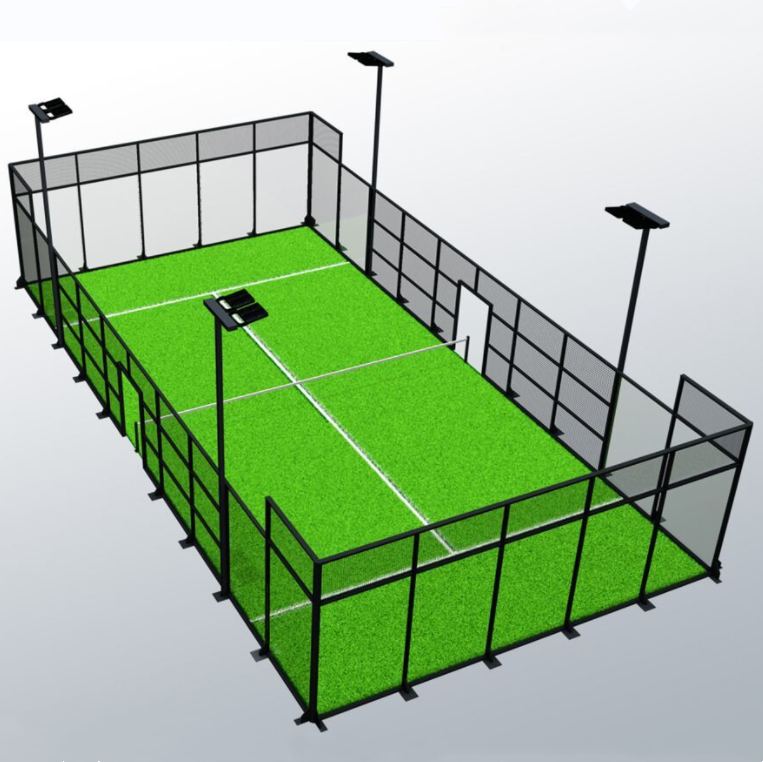What is padel tennis? A quick guide to this rapidly growing sport
Padel, a new sport that combines elements of tennis and squash, is played in doubles on a fully enclosed glass court. Its rules combine social and competitive elements. Originating in Mexico, it has rapidly gained global popularity. Here's a detailed introduction to padel tennis:
Origin and Development
Origin: In 1969, Mexican businessman Enrique Cocura, faced with limited space, designed a small, walled court and switched to wooden rackets, thus giving birth to padel tennis.
Spread: In 1974, Prince Alfonso of Spain introduced padel tennis to Europe, building the first court in Marbella. The involvement of King Juan Carlos of Spain and tennis star Manolo Santana, along with promotion in Argentina, fueled its rapid global popularity.
Current Status: As of 2023, Spain has over 20,000 courts and 4 million active players, making it the world's leading player. According to the International Padel Tennis Federation (FIP), there are over 25 million players in 110 countries and regions worldwide. Court and Equipment

Court:
Dimensions: 10 meters wide and 20 meters long, surrounded by glass walls (highest 4 meters, lowest 3 meters) and a metal mesh.
Features: A centrally divided net, ranging in height from 88 cm (center) to 92 cm (sides). The court's compact design makes it suitable for urban spaces.
Equipment:
Rackets: Similar to table tennis rackets, consisting of a base, sponge, and a paddle head, but with a larger paddle head and a longer handle, weighing 300-380 grams.
Balls: Lower air pressure than tennis balls, weighing 28-30 grams, typically yellow-green in color, and requiring regular replacement to maintain elasticity.
Shoes: Requires good grip and stability for quick movements and jumps.
Rules and Gameplay
Scoring System: Similar to tennis, scoring is based on 15, 30, 40, and game point. Each set must be won by at least two points. If the score is 40-40, a "golden game point" rule is introduced, with the next ball determining the winner. Format: Matches are typically played over three or five sets, with six games per set. If the score is 5-5, the opponent must win two consecutive games. If the score is 6-6, the match goes to a tiebreaker, which must be won by at least two points.
Hitting Rules:
The ball can only bounce once on its own court. Players can intercept the ball before it hits the ground or hit it after it hits the ground.
The ball must bounce on the opponent's court before hitting the wall. Players can return the ball by hitting the glass wall on the same side.
Serving Rules: The serve is a groundstroke. The server must stand outside the baseline, with the ball hitting below the waist. Serving rights are exchanged every two points.
Sport Features:
Social: Primarily played in doubles, the glass wall design lends the game a naturally performative and interactive feel, making it suitable for gatherings with friends or corporate team-building events.
Accessible: The rules are simple, allowing beginners to quickly master the game. The design of the rackets and ball lowers the barrier to entry.
Interesting: Similar to squash, the player can hit the ball directly or wait for it to bounce off the glass wall before hitting it, creating a variety of play styles. Adapting to Urban Spaces: The courts are less than one-third the size of traditional tennis courts, yet boast three times the efficiency per square meter of traditional gyms, making them a prime business model for commercial real estate operators.
Global and Chinese Markets
Global Market: Paddy tennis is experiencing phenomenal growth in Europe and North America. Since 2021, Europe has seen an average of nearly 100 new courts added per week.
Chinese Market:
Current Situation: Young people in cities like Shanghai, Chengdu, and Changsha are beginning to participate, and over 100 professional courts exist across the country.
Events: The 2023 China Paddy Tennis Tour (CPT-300) (Chengdu) will be Chengdu's first national-level event.
Business Potential: The market size reached US$190 million in 2022 and is projected to reach US$491 million by 2028, a compound annual growth rate of 17%.
padel court,Gymnastic mats, basketball racks, volleyball posts, tennis dwellings, badminton posts, adult gymnastic equipment, parallel bars, horizontal bars, uneven bars, gymnastic rings, balance beams, saddles, hydraulic referee tables, table tennis tables, outdoor fitness equipment, garden fitness equipment
Website:
http://www.hransports.com/faq/305.html